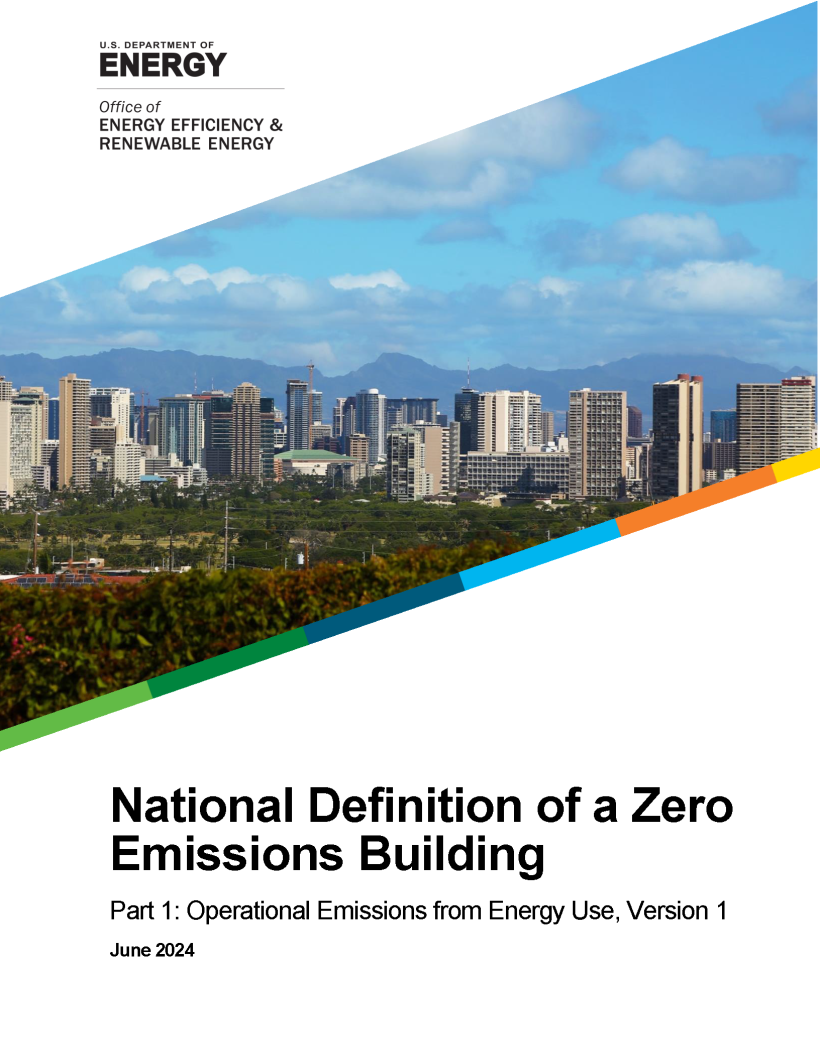Posted by Janet B. Stroud — June 17, 2024 — The U.S. Department of Energy (DOE) has just announced a National Definition of a Zero Emissions Building to advance public and private sector efforts to decarbonize the buildings sector, which is responsible for more than one-third of total U.S. greenhouse gas emissions.
The definition is intended to provide industry guidance to support new and existing commercial and residential buildings to move towards zero emissions across the entire sector and help the nation achieve President Biden’s ambitious climate goals, while cutting home and business energy costs. A standardized definition for zero emissions buildings will help advance next-generation clean energy solutions, drive innovation, and tackle the climate crisis, while supporting workforce development, says DOE.
Global building technology society ASHRAE called the move a “significant milestone to combat climate change by decarbonizing the built environment,” and said the National Definition “provides a clear market signal and consistent target, supported by measurable data, to propel the building sector towards a sustainable future.”
The National Definition of a Zero Emissions Building: Part 1 Operating Emissions is a comprehensive guideline aimed at providing a broadly accepted minimum standard for what constitutes a zero emissions building. By setting clear and measurable criteria, this definition offers a harmonized approach guiding both public and private entities in transitioning the building sector towards zero greenhouse gas emissions.
Three ASHRAE standards are referenced in the document:
- ANSI/ASHRAE/IES Standard 90.1-2022, Energy Efficiency Standard for Sites and Buildings Except Low-Rise Residential Buildings
- ANSI/ASHRAE/IES Standard 100-2024, Energy and Emissions Building Performance Standard for Existing Buildings
- ANSI/ASHRAE Standard 228-2023, Standard Method of Evaluating Zero Net Energy and Zero Net Carbon Building Performance
Part 1 of the National Definition, focusing on operating emissions, outlines three fundamental criteria for zero emissions buildings:
- Highly energy efficient: Buildings must demonstrate exceptional energy efficiency, placing them among the top performers in the market or achieving significant reductions in energy use compared to model codes.
- Free of on-site emissions from energy use: Zero emissions buildings must eliminate direct greenhouse gas emissions from on-site energy consumption.
- Powered solely from clean energy: All energy used by the building must come from carbon-free sources, whether generated on-site or procured from off-site sources.
To ensure compliance, the definition includes detailed methods of measurement and verification. For existing buildings, criteria such as ENERGY STAR scores or measured whole-building energy use intensity are utilized, while new constructions must meet stringent energy efficiency and clean energy standards.
While Part 1 of the definition focuses on operational emissions, Part 2 will address embodied carbon and refrigerant impacts. These elements are crucial in fully transitioning the building sector to zero emissions, points out ASHRAE.
The National Definition of a Zero Emissions Building will be embedded in nearly every green building certification, adopted by leading investors and utilized in federal programs.
For more information and to access the full National Definition of a Zero Emissions Building document, visit DOE.





